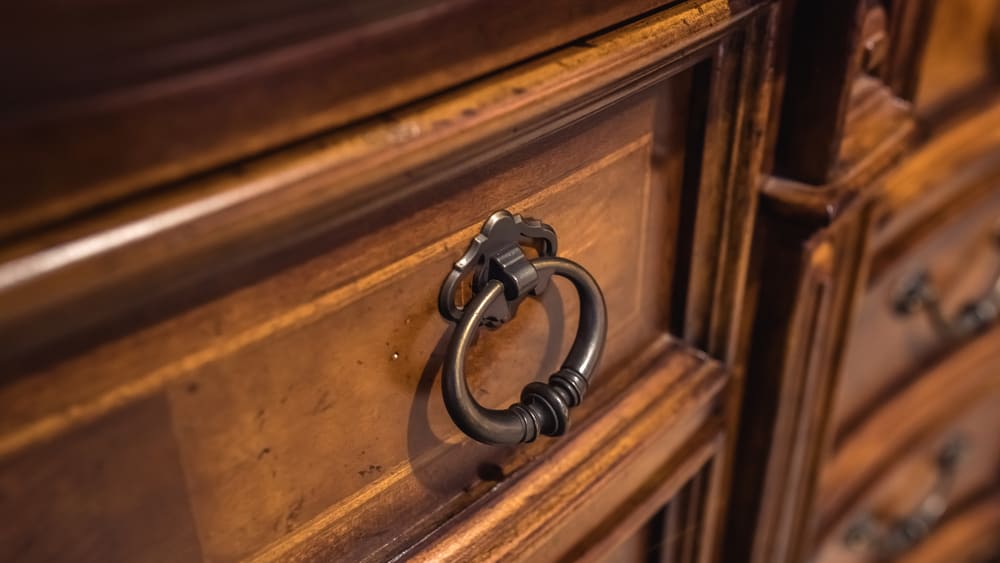If you are a passionate antique collector then you are for sure obsessed with collecting antique drawer pulls, locks, keyholes, knob handles, or anything else you can use to restore antique furniture.
Also, you may want to make your modern furniture look vintage-ish so having a collection of antique add-ons is a must in order to do a proper furniture makeover. Honestly, antique drawer pulls should be listed as little pieces of art, and in this article, you will find out why am I saying this.
Table of Contents
Drawer Pulls Evolution
Antique drawer pulls construction went through many different phases depending on the period and the century when they were made. This is a great thing actually since it will help you to recognize and identify real antique furniture handles.
In the late 17th century drawer pulls were simple and usually made as single cabinet knobs that hung from the drawers on a flat plate mainly made of brass or pure copper, silver, or bronze. You will recognize them by their imperfect look since they are full of ridges and bumps on the surface.
The design evolved over time so in the 18th century, drawer pulls transitioned from knobs to a bail shape that we mostly use nowadays. They feature two pins from which hangs an inward curved pull that was attached to the furniture with nails or simple bolts. These were also made from brass but it was more yellowish in color, copper, or silver.
In the late 18th century shape remained the same but the material changed. As you know brass is an alloy of copper and zink, depending on the amount of copper and vice versa the color and durability change.
Handles from this period had more copper so they were more red and durable. However, this brass was easier to work with, so the handles had fewer imperfections.
In the 19th century, things changed significantly since by now antique dresser handles were made by hand. In this period drawer pulls were stamped by machine which made them look more uniform and opened up doors for a wide variety of materials besides brass (iron, cast iron, silver, gold, any metal available literally).
What are the different styles of drawer pulls?
So as I mentioned just above, design and styles changed over the years as materials and the tools for crafting evolved. Here is the list of most used vintage drawer pulls.
- Antique bail pulls – Most typical and most primitive ones are these. This handle swings back and forth so you can open the drawer Usually, they were simple without any carvings and ornaments, on a flat backplate that might have monograms or some plain decoration.
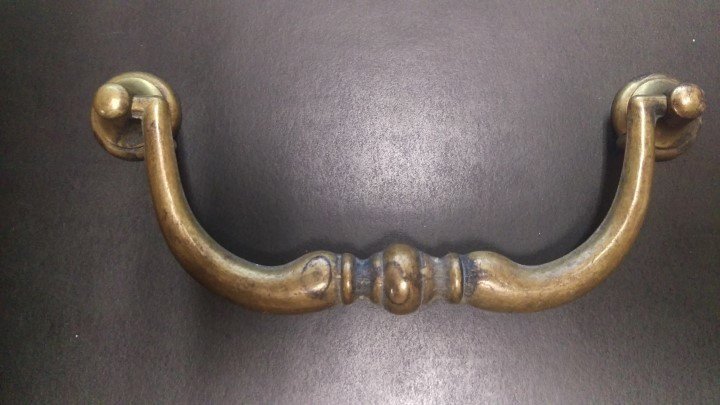
- Pulls with inlaid backplates – Here the accent was on a decorative backplate more than on a handle on its own. The inlaid backplates were made from brass, iron, bone, or chine even. They were handmade, very hard to make, and they are very valuable.
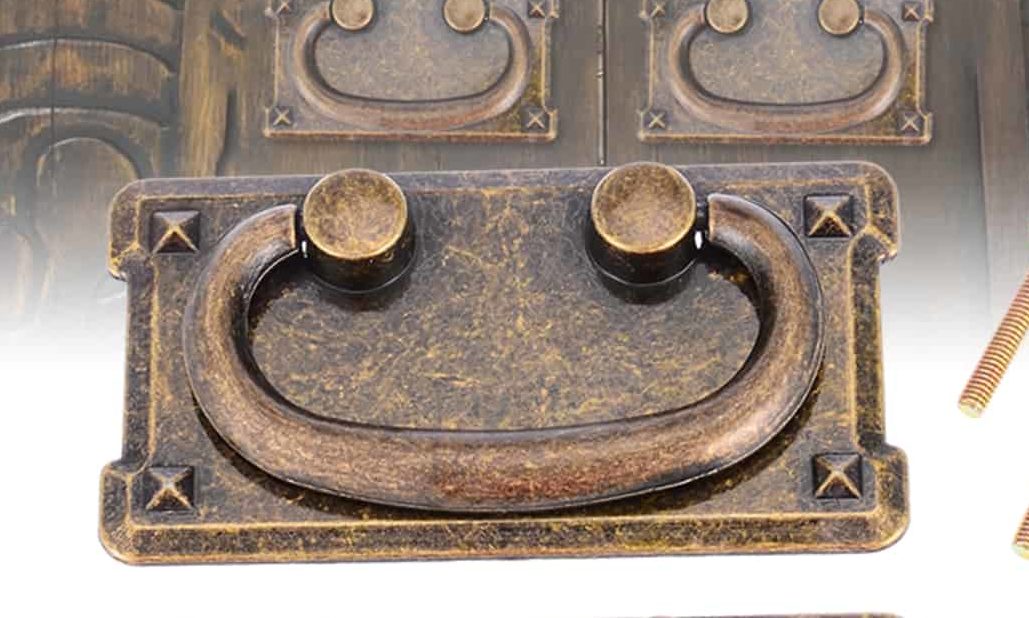
- Vintage ring pulls – A ring hangs from a hinge that you use to slip finers through and open the drawer. This style was used in the 1900s, even though the ring pulls were made before that time.
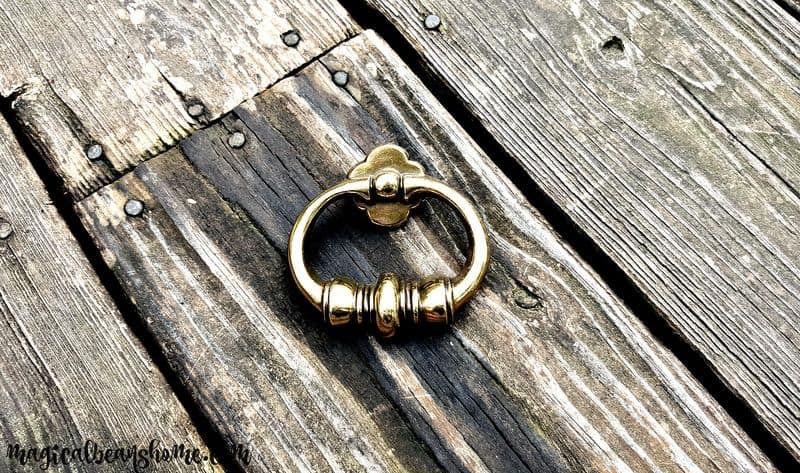
- Antique drop pulls – Similar to ring pull, drop pulls also hang from a single hinge. They have a drop-shaped piece of metal, wood, or glass that you use for pulling out the drawer. This style was very popular in the late 1800s and they were very creative and good-looking.
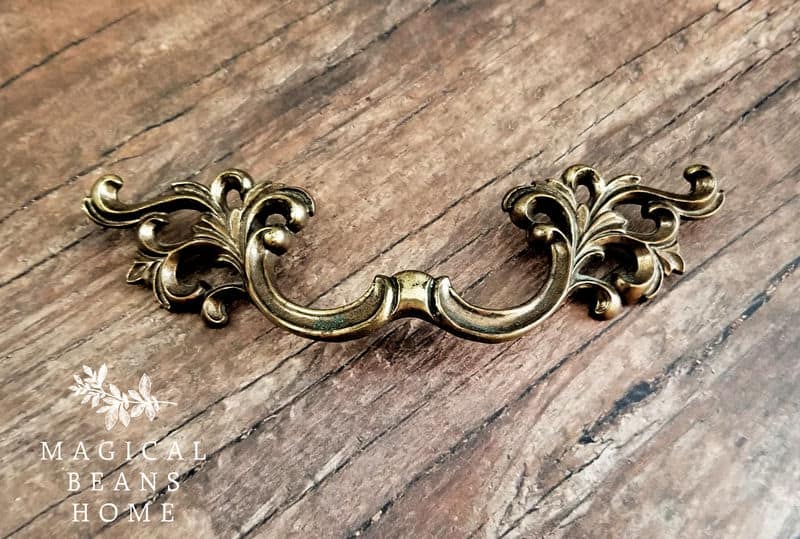
- Carved wood drawer pulls – These are very rare, beautiful, and valuable. The pulls are made by hand and fully carved out of wood. Mostly they are decorated with blossoms and leaves details. If you prefer this style you’ll find it on furniture that originates from the mid-1800s.

- Antique bin pulls – These are simple yet very solid pulls where you can slip your finger under to open the drawer. They were primarily used in the 19th and early 20th centuries on bins in an apothecary, dry goods stores, and libraries on file cabinets and card catalogs.
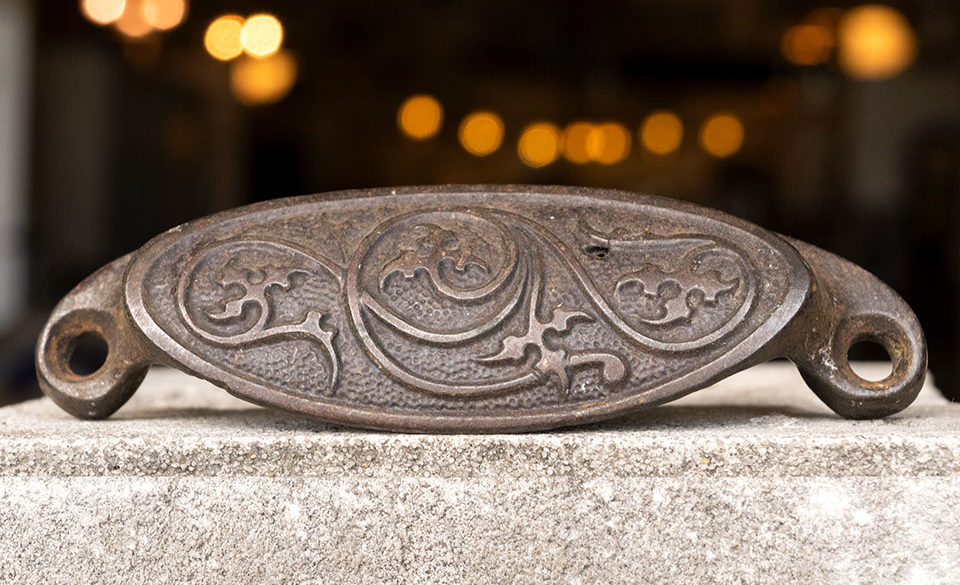
How Do I Identify My Antique Drawer Pulls?
The identification of any antique furniture or a part of furniture covers a very broad area. To someone who is not familiar with vintage items, it can be an overwhelming and confusing process.
It is great to know how to identify the styles of drawer pulls since this way you’ll be able to get an idea from which period your piece of furniture originates and how valuable it is. There are several things to look for when examining hardware:
- First, always check for a signature from the furniture maker and date.
- Check the construction of the joints and look at the screws that are used for attaching the hardware to the furniture. Handmade dowels and pegs are used until the 1600s, dovetailed joints are used in the 1700s, and Knapp joints in the late 1800s.
- The next thing you should check on is nail construction.
- Material that was used for crafting the drawer pulls as well as the whole furniture. Look for the signs of patina, rust cracks, or any discoloration.
Where to buy vintage drawer pulls?
I usually recommend you to check your local antique shop first, but this time the situation is a bit different. Antique shops mostly get ahold of complete furniture and rarely they will sell just parts. But that only means you should look further.
Flea markets are the best place when you are in search of a particular part of any vintage furniture. Also, web pages like Etsy and eBay are jampacked with antique pieces that aren’t complete and can be sold in parts only, so check there first.
If you don’t find what you are looking for you can always hire someone to make you drawer pulls that have a vintage vibe.
Conclusion
Are you about to restore a piece of antique furniture that misses some hardware, or do you simply want to change the old drawer pulls (with even the older ones)?
No matter what the deal is, the antique drawer pulls are the way to go. The only thing you need to look out for is to acquire the ones that have the same spacing as the original ones.
If any of you have extensive knowledge about antique furniture and hardware, we would be grateful if you can share some basics with us here.
